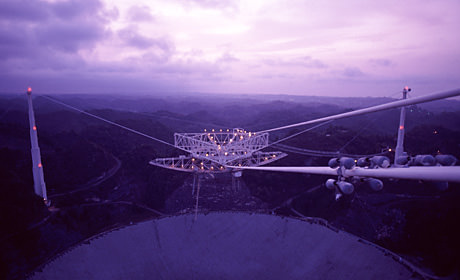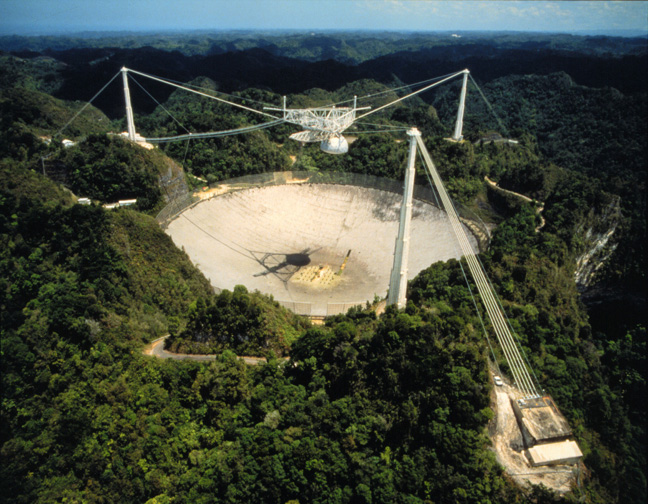Damage to the iconic Arecibo Observatory from an earthquake earlier this year has been repaired and the telescope is now back to full service. On January 13, 2014, the William E. Gordon radio telescope sustained damage following a 6.4 magnitude earthquake that was centered 37 miles northwest of Arecibo. A large cable that supports the telescope’s receiver platform had “serious damage,” according to Bob Kerr, the Director of the Arecibo Observatory.
“In an abundance of caution, telescope motion had been very limited since the earthquake,” said Kerr in a press release issued today. “Nevertheless, the telescope continued its science mission, including participation in a 10-day global ionospheric study in late January and continuing a productive search for pulsars in the sky above Arecibo.”

The cable that was damaged was one of 18 cables that supports the 900-ton focal platform of the telescope. This particular cable was actually a known potential problem, Kerr told Universe Today in a previous interview. He said that during original construction of the telescope in 1962, one of the original platform suspension cables that was delivered to the observatory was too short, and another short cable section was “spliced” to provide sufficient reach to the platform.
“That cable segment and splice near the top of one of the telescope towers was consequently more rigid than the balance of the suspension system,” Kerr said. “When the earthquake shook the site, just after midnight on January 13, it is that short cable and splice that suffered damage.”
“You might say that our structural Achilles heel was exposed,” Kerr added.
Inspectors from New York’s Ammann & Whitney Bridge Construction, who have been inspecting the Arecibo observatory site since 1972, were brought in to access the situation and Kerr said a relatively low-cost (less than $100,000) repair option was designed and carried out, bringing the telescope back into full service as of March 13, exactly two months from when the earthquake occurred.
The Arecibo Observatory is operated by SRI International, teaming with Universidad Metropolitana and the Universities Space Research Association, in a cooperative agreement with the National Science Foundation.


What no videos of the ‘fix’? Did they weld, splice or otherwise reuse the old cable(s)?
I found this image: http://www.sri.com/sites/default/files/uploads/arecibo-repair-lg.jpg
Thanks for the pic. More please UT!
Yay! More asteroids!